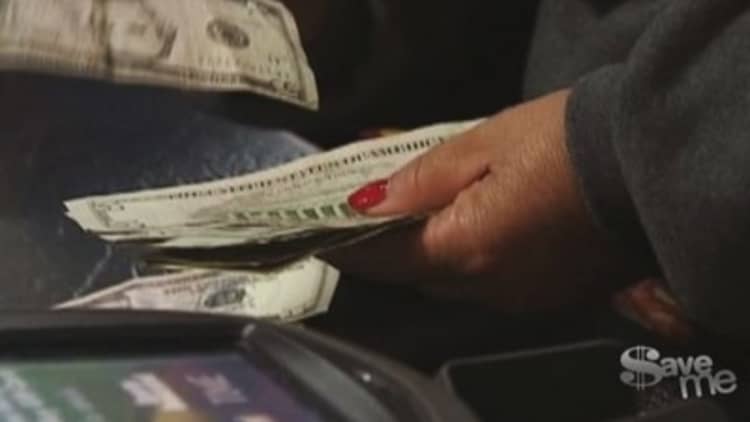The next time you come across a flyer advertising a Black Friday deal that takes 50 percent off the retail price, you may not want to regard it as a "steal."
Retailers are still making big profits even while slashing prices, according to Vincent Quan, associate professor at the Fashion Institute of Technology.
There's a science behind holiday markdowns. Retailers adhere to specific formulas set six to nine months in advance, and each discount is closely mapped out to lure consumers into the stores during Black Friday weekend and beyond.
Read more: Holiday gift guides:
Pssst, Santa! This is what kids want this holiday
10 must-have gifts for gadget lovers
Hit a home run: Gifts for the sports lover
Must-have video games this holiday season
"Calculate what you pay, not the discount. If something is 40 percent off, you're really paying 60 percent," said Quan. That math suggests there could be a lot more wiggle room for retailers to discount if holiday weekend sales come in soft.
Women’s Dress: $300 MSRP
| % Off original retail | New price | Cost | Mark-up maintained |
|---|---|---|---|
| 20% | $240 | $60 | 75.0% |
| 30% | $210 | $60 | 71.4% |
| 40% | $180 | $60 | 66.7% |
| 50% | $150 | $60 | 60.0% |
| 60% | $120 | $60 | 50.0% |
Source: Source: Vincent Quan, associate professor at the Fashion Institute of Technology.
To put it into perspective, Quan broke down how much a typical apparel store could make if it cuts a retail price by half.
Let's say the initial price of a women's dress is $300 and it gets cut to $150 (see figure above). At department and chain stores, the initial markup is typically 70 percent to 80 percent. So assuming it cost $60 to make, the retailer is still making a profit of as much as $90.
A scenario like this gives retailers an opportunity to lock in contingency plans if sales don't measure up to forecasts.
(Read more: The uphill battle facing retailers this holiday)
Traffic patterns this season will be a major factor in determining whether retailers will get more aggressive to move inventory. With six fewer holiday shopping days this year and intense online competition, it's a situation every major store is closely watching.
But it may not be as dismal as it sounds.
There are still a lot of levers retailers can pull to get more shoppers into the stores and make it a profitable season, said Mary Epner, who runs advisory firm Retail Analysis. She has held merchandising positions at Aeropostale and Macy's.

Just like the airfare ticket wars, if one retailer drops the price on an item, there's a good chance its competitors will be forced to follow suit, according to Epner.
(Read more: Fewer buttons? Retailers skimping to boost profits)
"No one is leaving anything to chance," she said. "If a teen retailer breaks price on denim, others will, too."
Due to the re-emergence of J.C. Penney as a holiday sales competitor this year, she added, discount- and midtier department stores may be more open to matching competitors' prices this year in order to move inventory.
(Read more: JC Penney's $1.97 pants could spoil Christmas )
So maybe you want to sit tight Black Friday weekend and take a wait-and-see approach in order to grab even deeper discounts that could soon come down the pike.
—By CNBC's Stephanie Landsman. Follow her on Twitter @StephLandsman.





